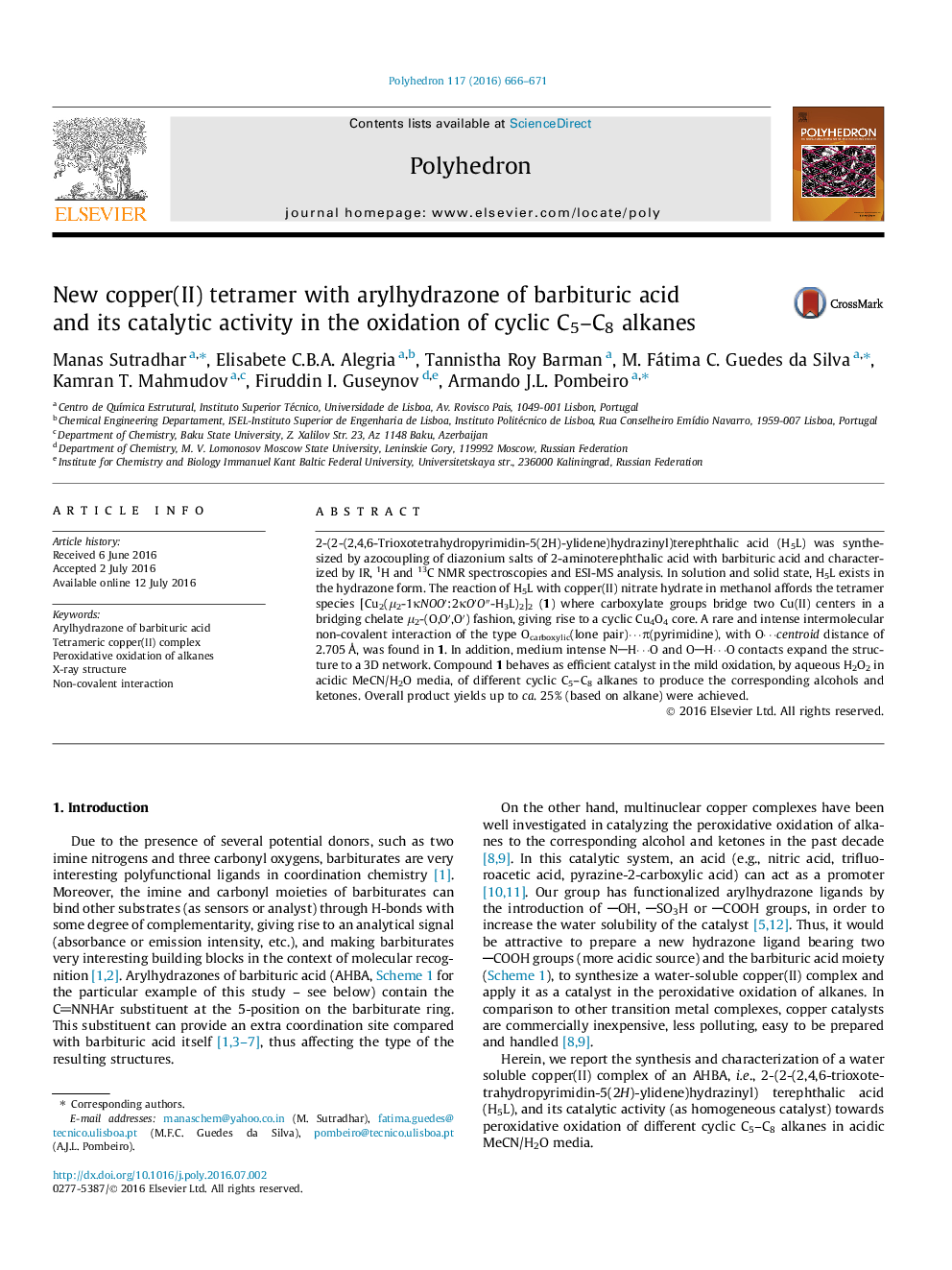| Article ID | Journal | Published Year | Pages | File Type |
|---|---|---|---|---|
| 1336254 | Polyhedron | 2016 | 6 Pages |
2-(2-(2,4,6-Trioxotetrahydropyrimidin-5(2H)-ylidene)hydrazinyl)terephthalic acid (H5L) was synthesized by azocoupling of diazonium salts of 2-aminoterephthalic acid with barbituric acid and characterized by IR, 1H and 13C NMR spectroscopies and ESI-MS analysis. In solution and solid state, H5L exists in the hydrazone form. The reaction of H5L with copper(II) nitrate hydrate in methanol affords the tetramer species [Cu2(μ2-1κNOO′:2κO′O″-H3L)2]2 (1) where carboxylate groups bridge two Cu(II) centers in a bridging chelate μ2-(O,O′,O′) fashion, giving rise to a cyclic Cu4O4 core. A rare and intense intermolecular non-covalent interaction of the type Ocarboxylic(lone pair)⋯π(pyrimidine), with O⋯centroid distance of 2.705 Å, was found in 1. In addition, medium intense NH⋯O and OH⋯O contacts expand the structure to a 3D network. Compound 1 behaves as efficient catalyst in the mild oxidation, by aqueous H2O2 in acidic MeCN/H2O media, of different cyclic C5–C8 alkanes to produce the corresponding alcohols and ketones. Overall product yields up to ca. 25% (based on alkane) were achieved.
Graphical abstractA water soluble tetranuclear Cu(II) complex of arylhydrazone of barbituric acid [Cu2(μ2-1κNOO′:2κO′O″-H3L)2]2 acts as efficient catalyst precursor in the mild peroxidative (H2O2) oxidation, in an acidic MeCN/H2O medium, of C5–C8 cycloalkanes to the corresponding alcohols and ketones, with yields up to ca. 25%.Figure optionsDownload full-size imageDownload as PowerPoint slide
